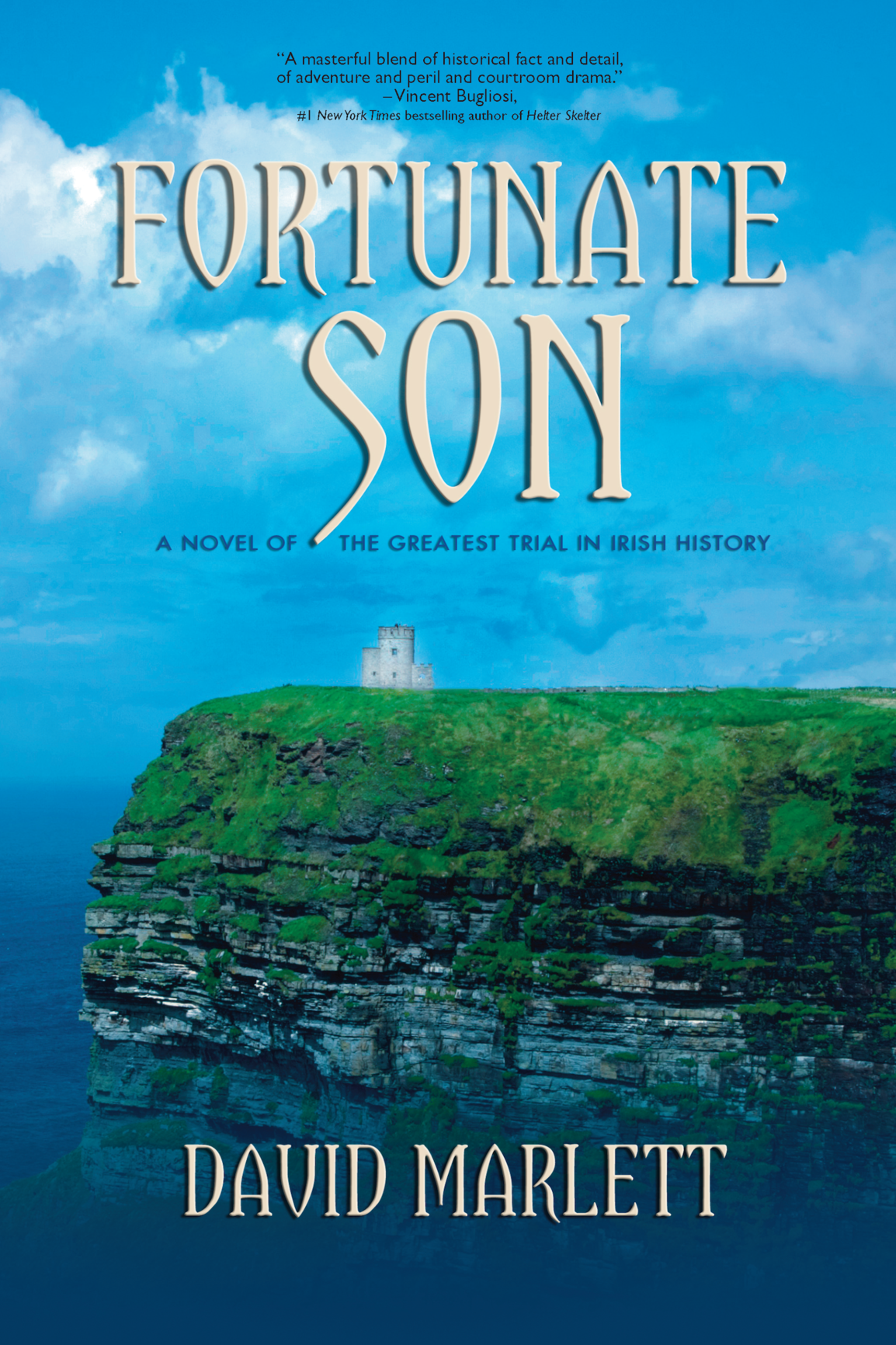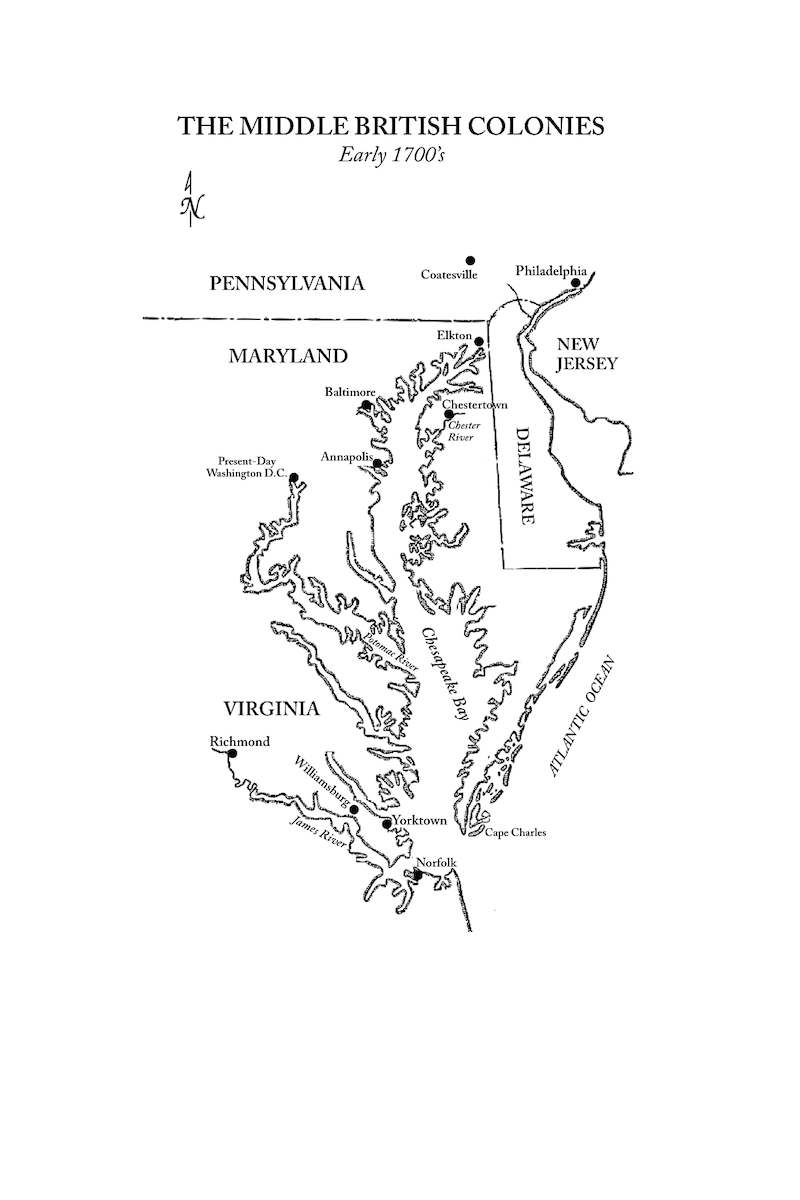Fortunate Son




THE STORY PLANT
Studio Digital CT, LLC
PO Box 4331
Stamford, CT 06907
Copyright © 2013 by David Marlett
Jacket design by Barbara Aronica Buck
Hardcover ISBN-13: 978-1-61188-159-2
Paperback ISBN-13: 978-1-61188-077-9
E-book ISBN-13: 978-1-61188-078-6
Visit our website at
www.TheStoryPlant.com
All rights reserved, which includes the right to reproduce this book or portions thereof in any form whatsoever except as provided by US Copyright Law. For information, address Studio Digital CT.
First Story Plant Printing: February 2014
For my father,
le do ghraÌ agus inspioraÌid
Go Raibh Maith Agat Go Léir
I am so very grateful to a number of people for their support, encouragement, editing, attaboys and assistance throughout the years of my researching and writing of this novel. I begin by thanking Thomas Haack, without whose singular vision, courage, and support my writing career might never have launched. Thank you Tom for rolling the proverbial dice.
Tá tú mo bhuÃochas ó chroÃ.
In that same vein, I am warmly indebted to my steadfast friend and backer, Wesley Davis, for his unwavering encouragement and assistance.
A Prionsa I measc na bhFear.
I am grateful to my parents, Dr. Robert and Carolyn Marlett (
tá mé mac ádh
),and my brilliant children, Meredith, Caroline, Kathleen and Jack.
An t-aer unseen faoi bhun mo sciatháin
. Their love and encouragement sustain me more than they will ever know. I am grateful to Michelle Wisk Marlett (
mo cara móide
) for her patience, support, and faith in my dedication to seeing this through. I am appreciative of Ruth Miller who tolerated early drafts and attended at least one research expedition with me through England, Scotland and Ireland. And I am also grateful to my literary agent, the incomparable Jane Dystel; my visionary publisher, Lou Aronica; and two thoughtful and highly skilled editors, Joanne Starer and Sue Rasmussen.
In addition, I thank Aidan Quinn, Josh Kesselman, John Davis, Mitchell Maxwell, Vincent Bugliosi, and David English for their unique contributions toward the completion of this work.
I am indebted to a host of people in Ireland, Scotland and England who were vital in my research. A specific thank you to Ann and James Conway and their children for graciously hosting me in the famous and historic Dunmain house in County Wexford, Ireland. Further I appreciate the support of the staff of Christ Church Cathedral (Dublin, Ireland); Library of Trinity College (Dublin, Ireland); National Library of Ireland (Dublin, Ireland); Irish Legal History Society (Dublin, Ireland); University College Dublin School of Law, Roebuck Castleâ
An Coláiste Ollscoile, Baile Ãtha Cliath
(Dublin, Ireland); John F. Kennedy Arboretum (County Wexford, Ireland); The British Museum (London); National Museum of the Royal Navy (Portsmouth, England); Royal Historical Society (London); The Historical Association (London); The Seldon SocietyâUniversity of London, School of Law at Queen Mary (London); Historic Scotland (Edinburgh, Scotland); Highland Folk Museum (Newtonmore, Scotland); West Highland Museum (Fort William, Scotland); The Stair SocietyâThe University of Edinburgh, Edinburgh Law School (Edinburgh, Scotland); The New Ross Chamber of Commerce (New Ross, Ireland). I am specifically indebted to the staff of The Kennedy Homestead (New Ross, Ireland) for the insight into the early pre-American Kennedy family and their association with the Annesleys of County Wexford.
In the United States, I owe a debt of gratitude to a number of institutions and organizations, including the Colonial Williamsburg Foundation (Williamsburg, VA); Colonial National Historical Park (Yorktown, VA); Virginia Historical Society (Richmond, VA); Mariner's Museum (Newport News, VA); Historical Society of Delaware (Wilmington, DE); Maryland Historical Society's Museum and Baldwin Library (Baltimore, MD); Pennsylvania Historical and Museum Commission; Cornwall Furnace (Cornwall, PA); Lukens National Historic District and Brandywine Iron Works (Coatesville, PA); Smithsonian Institution (Washington, DC); Library of Congress (Washington, DC); Harvard Law School Library (Cambridge, MA); The Museum of Printing History (Houston, TX); and The University of Texas School of Law (Austin, TX).
I specifically wish to express my appreciation for the Jamail Center for Legal Research at the Tarlton Law Library at my alma mater, The University of Texas School of Law in Austin, Texas. I am indebted to that institution and its premier faculty for my introduction to the study of law and legal history, for my introduction to this case, for having the ancient trial transcript in their extraordinary law library, and for not having better security such that I was able to get locked in the stacks overnight, reading the amazing transcript and meeting the incomparable James Annesley.
Tá súil agam gur féidir linn a bheith t-ádh a fhoghlaim a fÃrinneach atá againn a is iad.
1727
Aide me, o justice! Be my guide, o truth!
While inspirited by the love of you, most amiable virtues,
I attempt to paint the distresses of helpless injured innocence: to trace the mysterious windings of deep deceit;
the cruel paths of lawless avarice and wild ambition;
to show how fatal to their posterity variance between the wedded pair may sometimes prove; and how attentive villainy from thence may form the most successful projects.
The story I have to relate is full of wondersâall the passions are concerned in itâI have to treat of strange unnatural persecutionsâaccumulated sufferingsânumberless dangersâmiraculous escapes.
O may my words have energy to give each incident a true descriptive force to warn the gentle generous soul with alternate pity and indignation, and make the guilty, tho' ever so great in power, and wealth, and titles, start at the reflection of himself.
â
Memoirs of an Unfortunate Young Nobleman,
James Annesley, 1743
â trial transcript, Annesley v. Anglesea, 1743
Every man has three names:
One his father and mother give him,
One others call him,
And one he acquires himself.
â Anonymous, 17th Century
Sunday, November 16, 1727
Lord Arthur Annesley, the Sixth Earl of Anglesea, was slopped. He had been sitting alone at his oak table in the dark back corner of the Brazen Head Tavern since half-past ten that morning. Now, nearly five in the evening, he could hear fresh rain blowing across Dublin's Merchant's Quay, tapping the tavern's windows, dripping heavy in pools along Bridge Street. He was floating, his white wig askew, his fat fingers tracing the blood groove of his gold-hilted rapier lying on the table. “He's mine, he is,” he muttered to no one. “B'god, James is mine! So he is. She'll never take him to England.” He glanced up with his one eye, the other having been long ago shot out by his wife's cuckolding suitor. “My son's mine,” he boomed. “Damn you all!” A violent cough overtook him until finally he lowered his chin, rivulets of perspiration trickling down his brow.
“âTis well known, me lord, James is yer son,” the tavern keeper offered. “Would ye like another?”
“Ney!” Arthur shook his head, muttering, “No more boys.”
“Ach nay, me lordâwould ye like another pint?”
“Ha! Ney, Keane. Best be on m'way.” He stood shakily, steadying himself on the dark wall, sheathing his rapier.
“Well den, g'night sire,” the keeper said, gesturing with his bar towel.
Arthur tapped the wrinkles from his blue Italian cocked hat. “Keane?”
“Aye, m'lord?”
“What be the cureâ¦.” He stumbled sideways, trying to buckle his sword sash. “What be the cure for a hangover? I'll wager you don't know.”
“Sleep, most likely,” Keane answered, moving across the small room, delivering a dram to a large man sitting alone. “What do ye think, sir?” he asked the man.
“I have no reckon,” the man muttered, his Scottish brogue rumbling low. “Leave me be.”
“I suppose a pinch o' snuff might do ye, Lord Anglesea,” Keane guessed, wiping his hands on his apron.
“Ney, goddamn you, Keane!” His words a lather of grumbled mush, his arm a terrier in a fox hole, fumbling through the twisted coat sleeve. He spun, shoving his hand through. “I knew you didn't know, you damn thievin' Irishman. âTis t' drink again!” He staggered backward to the door. “That be the cure, b'god!”
“Aye, me lord,” said Keane. “So I've heard.” Now the Scotsman was standing too.
“T' drink again!” Arthur bellowed, throwing his arms up. “T' drink again, âtis all you need!” Turning, he careened through the doorway, along the rickety boardwalks, lurching into the muck of Bridge Street. “âTis all I need!”
A large hackney coach pulled by six horses was crossing the Father Matthew Bridge, gaining speed in the pelting rain. The horses snorted against the driver's whip as he yelled from the box, his cloak flailing in the wet wind. “Up with ye curs! Now! Up! Up!” Again and again he cracked the long leather across their backs. The loud roar and stirring commotion of the coach and six easily cleared traffic from the bridge, opening a wide swath up Bridge Street beyond, like a plow cleaving mud. When the horses reached the quay on the far side of the River Liffey they were pulling so hard and running at such a blaze that all four wheels left the ground before crashing back to earth to spin in the slurry sludge. Galloping past the Brazen Head Tavern, with nostrils flared and eyes mad wide, they would not and could not stop for anything in their path.
Against the whir of voices the ale had loosed in his head, Arthur heard charging hooves, people shouting, and through the stinging rain, he saw a maniacal blur rushing him. But he couldn't move. A black surging wall, yet he stood, stammering something about God. Finally one step toward the side, but it wasn't enoughâthe violent impact threw him back and down. Twenty-four hooves thundered over him, snapping his right leg like straw, driving it into the thick mud. Another hoof trampled his gut, his ribs shattering. Instant fire. Then the coach hit him, the splinter bar catching his chin, the front axle crushing his larynx, cracking spine, whipping his head into the path of the rear wheels which slammed over him, mashing his face into the filth and black ooze.
His one eye fluttered open, stinging, but he couldn't breathe. To one side he saw muddy boots and spursâsome standing, others moving away. His bloody mouth sagged, convulsing for air. He felt warmth trickle from his ears. Life abandoning him. Then, between the clamoring shouts and splashes, he heard the massive bells of Christ Church Cathedral begin their solemn peal, announcing the time. He stopped moving, and there in the shadows of his mind he saw James, no more than five, standing on a rocky hill, laughing, the sea air tousling his auburn hair. Suddenly James sprinted off, through an emerald field, clambered over a low stone fence, then raced on, away, toward a man who was waiting, watchingâa man Lord Arthur Annesley, the Earl of Anglesea had never been.